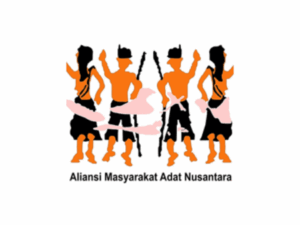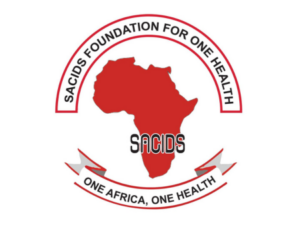Global Health Informatics Institute works at the intersection of science, engineering and global health to address issues of global health.
Timothy Mtonga of Global Health Informatics Institute spoke with Lissa Harris on January 31, 2024. Click here to read the full conversation with insights highlighted.
Lissa Harris: Could you start off by introducing yourself and your organization, and talk about the problem that you’re working on and how you are trying to solve it?
Timothy Mtonga: My name is Timothy Mtonga. I’m the Director of the Global Health Informatics Institute based in Lilongwe, Malawi. I’m also one of the three technical advisory board members of Oxygen Alliance which was birthed out of our partnership with Sanrai.
During COVID, we helped fix oxygen concentrators and were pretty successful in that. We were able to repair over 600 oxygen concentrators within a year. As we were sharing our experiences through our monthly phone calls with the ‘Every Breath Counts Coalition’, we had several people reach out to us and ask if we could also work in other countries and support them.
We didn’t work in other countries, but we were willing to set up similar organizations in other countries that were willing to help people.
Initially, we started Oxygen Alliance with the goal of helping other countries set up institutions that can repair and maintain biomedical equipment. But that quickly evolved into an advocacy campaign to set up biomedical equipment maintenance programs in low- and middle-income countries, which is what we’re currently doing through the Oxygen Alliance.
Lissa Harris: Who are you working with most directly? Is it mainly healthcare organizations on the front lines, or are you doing more policy work by engaging more with local governments? Who benefits the most from your work and how do you engage with them?
Timothy Mtonga: We have five pillars that we focus on to address this particular problem.
We are engaging with different governments, so our goal is to reach out to all the governments in Africa within three years. We’re currently 12-15 months into the program, and we’re working with the ministries of health to do a situational analysis of the current state of maintenance and repair in each country. We then leverage that to advocate for policies or a review of standard operating procedures. Another part is that we’re working with NGOS who are already working with governments and doing work on the ground.
We’re working with NGOs to advocate on the fact that when different health facilities buy, supply or donate equipment, there needs to be a consideration for a maintenance and repair budget.
We’re also working to come up with a consensus around having a clear policy within organizations that if we are supporting the supply of biomedical equipment, there has to be a clause that goes with it to make sure that the equipment is used because there’s a high amount of equipment that gets donated but never used.
Otherwise, we’re working with the biomedical engineers responsible for maintaining and repairing this equipment when it goes into the clinical space. We work with them mostly through associations, but in places like Malawi, where these institutions don’t exist, we’re supporting the establishment and formation of such organizations. We’re also providing various training materials and resources so that biomedical engineers can get assistance they need for doing the work in the field. In connection to that, we’re working with academic institutions. As the producers of biomedical engineers that come and maintain the different equipment, we’re working with them to address the gaps in curriculum.
Lastly, we’re also working with the manufacturers to advocate for the provision and access of spare parts and support for maintenance for lower- and middle-income countries.
Lissa Harris: Can you talk about what makes your approach distinctive from other organizations that are working in this space?
Timothy Mtonga: There’s a real synergy across all the five pillars. Because most of this started with our own experience with our Open O2 group, we were able to relate with all five pillars.
We work with the Malawi Ministry of Health. We have capacity building group initiatives with the Open O2 where we bring interns — training them for six months and letting them go into the industry. Through Sanrai, we’re also partnered with a distribution network for different biomedical engineer equipment, which ties us to different manufacturers.
Our approach with the five pillars doesn’t just seek to bring equipment and donate to people; we’re trying to make sure that even in five years when we may not be around, we have changed the mindset and culture such that people are able to maintain the equipment that they have because one of the biggest problems is that when things can’t get repaired, you need heavy capital investments to purchase the same equipment.
You have to look at things from both a top-down and bottom-up approach. We’re working with the governments and NGOs at the central level. On the ground routes, we’re working with academic institutions and biomedical engineers. So it’s done with combined efforts all happening at the same time. That’s pretty unique for people working in this field.
Lissa Harris: How do you engage new partners, whether that’s NGOs or governments? How do you seek out other new partnerships?
Timothy Mtonga: We leverage a lot of connections, so we’re working with a lot of people we already know, then that usually snowballs into others.
For example, when we met with PATH, an NGO working in Malawi, we asked them about their colleagues in other countries. They were able to make those introductions, and we took it from there. That’s one approach. If we already know someone who’s working in a particular country, we’ll often just reach out to ask if they can connect us to other NGOs, or related players in the field.
Since this all started with our work of trying to assist other groups doing biomedical equipment repair through Oxygen Alliance, we already had that network of people that we were able to leverage and facilitate into this new work that we’re doing.
Lissa Harris: Can you share an example that illustrates the impact of the work that you do?
Timothy Mtonga: In our first year of work, there’s been several things that we have done. We’ve set up a network of different academic institutions that are offering biomedical engineering degrees and are currently in the process of doing a curriculum review through a tool we’ve developed to assess the knowledge gaps amongst their graduates.
One thing that has happened out of this work is that we’ve had institutions reach out wanting to start biomedical engineering programs, so the next steps for us would be to connect them with another school or consultants within the network to help them establish their program and develop their curriculum.
Lissa Harris: What are some of the insights or the lessons from your work that others can use or learn from?
Timothy Mtonga: There are several things we’ve learned. Part of our initial goal was to start by signing MOUs with governments and using that to have formal relationships, but we’ve realized that process can take forever to complete, so we’ve pivoted to getting letters of interest.
We initially thought that we’d be working with a multi-country set up with people traveling to different countries, but we’re quickly learned that the ideal way is to have people on the ground within the countries, so we’ve pivoted from having one person traveling all over to having country leads. Within each country, there’s someone who is engaging the academic institutions, government, and NGOs.
We’ve also learned that academic institutions in Africa are really keen on improving and connecting with other groups. Every time we spoke to a different academic group, we got a new idea to incorporate into what was missing. They were filled with feedback, passion and drive to better their programs and connect with other groups. Something that has come out of that is we’re now seeking to establish a journal for biomedical engineering within Africa so they can publish their work and learnings. There are several things that are coming out of the work, and I think it’s really exciting working in this space.
Lissa Harris: How do you measure success? What evidence do you look at to measure that you’re making progress?
Timothy Mtonga: Because it’s our first year, we’re still establishing everything we need and making connections. Some of our biggest key performance indicators are how many people we’ve contacted and how many signed letters of intent. We work with so many different groups that we’ve also begun to identify the different things that work best for them.
For example, one of the things we’ve done is start a webinar every Thursday; we have online sessions where people ask questions to our biomedical engineering team. The first year was really hard, and we’re really trying to figure this out. We started with about thirty people joining these sessions, but now that we’ve adapted our approach, we’ve had over ninety people joining the sessions, and even more people watching the video recordings on our YouTube Channel. That’s been a real milestone for us.
Tomorrow, we’re having our first session with multiple academic institutions to talk about the curriculum assessment initiative. There’s at least ten academic institutions joining for that session.
Lissa Harris: Are there things that you’ve tried that didn’t work but learned from?
Timothy Mtonga: There are things that have not worked to differing degrees. Pivoting from the MOUs was one, and having a central team traveling to the different countries was another.
For our work with academic institutions, one thing that we’ve had to deal with has been the fact that certain details within a curriculum can actually be considered intellectual property. We’ve had to pivot away from having them give us their curriculum so we can go over it with our assessment tool to giving them the tool to review their own curriculum with their students.
We’ve also had to reconsider the idea of having a policy brief written for each country, and instead, providing the situational analysis tool as a public good that can be used by different countries and hospitals to assess themselves on where they are in terms of their biomedical maintenance and repair programs.
We’re still working on our manufacturing pillar since there’s a lot of data and evidence still needed. We plan to get evidence from several countries before approaching different manufacturers to show them the kinds of challenges being experienced with their equipment, including whether they’re having trouble accessing information and spare parts.
Lissa Harris: Are there obstacles that you face that you’re still working on overcoming? Are there other kinds of large scale issues that you still need to solve in order to push the work forward?
Timothy Mtonga: Currently, our funds are being managed by the Global Health Informatics Institutes as the managing partner in the alliance, and we’ve had a lot of challenges with the Forex situation within Malawi. There’s been a lot of red tape around transacting with the US dollar and paying people internationally. It’s been a longstanding problem that we’re thinking of addressing by transitioning to registering the Oxygen Alliance as its own independent organization, so we can transfer all the funds we receive in Malawi to this new organization which will be organized outside of Malwai with its own board.
Another benefit to doing that will be that the program will continue to have life even after the current funding is done or that term runs to an end. Oxygen Alliance has a vision and drive for something too big to be addressed in three years. That would help us set up the necessary structures for continuation after the current funding cycle is done.
Lissa Harris: How are you working to advance systems level change? How are you pushing for broader systems change with this work?
Timothy Mtonga: We involve governments from the beginning by offering to assess the current situation on the ground so there’ll be ownership in the output that comes from that work that can lead to systemic change in the government.
We’re also working with the biomedical engineers by building their capacities to do this work, and by partnering with academic institutions, we’re also working to ensure people are coming out of their degrees with the capacity for the work that is required of them. In places like Malawi, our biomedical engineering schools are pretty new. They’re right at the point of needing to evaluate whether what institutions are teaching and what graduates are doing when they come out is matching to make sure there’s alignment to the needs of the industry.
By making sure they have the knowledge on supply chain and communication with manufacturers, we’re hoping that they’ll have an attitude of knowing what is necessary to fix equipment and be proactive in getting it done. We want them to be able to communicate with hospital management or ministry personnel about what is needed and how much it’ll cost, and even be able to make comparisons of how much it would cost to replace it entirely.
We’re addressing the problem of maintenance and repair programs from multiple angles. We’re not just preparing for the current situation, but also what is coming down in two to three years. We want to make sure biomedical engineers are coming out of colleges empowered to advocate for these things, and it’ll have a more long-lasting impact than if we just worked with governments and hospitals.
Lissa Harris: What is most needed from other actors or partners in this space to advanced systems level change?
Timothy Mtonga: The biggest thing is collaboration. We are not competing. We are all trying to make things better, but sometimes, when there is limited funding, it can be very cutthroat.
We are fighting for the same resources, but it’s still important to have similar understandings then just agree that our approaches may be different. If we’re working on one common ‘manifesto’ then we can all be collaborating, contributing, and be doing our own work while still contributing to one common goal. This is one of the things that we try to do with NGOs.
We want to have organizations that are aligned to a certain set of beliefs or common understanding that when we buy equipment, for example, we will need maybe five to ten percent of our overall budget for repair and maintenance. Having that shared understanding could transform how things are done tremendously.
A common understanding and common commitments to a shared goal would be fundamental.
Lissa Harris: How do you see your work evolving over the next five years?
Timothy Mtonga: Definitely moving past just Oxygen with larger engagement with academic institutions.
I think facilitating the transition of people in academia and their experiences into industry, facilitating seamless integration of new graduates into the industrial workplace and setting will be the main things that can change and be impactful. Even though we’re called Oxygen Alliance, I think we’re definitely not going to focus on just oxygen.
Click here to read the full conversation with insights highlighted.
Lissa Harris is a freelance reporter and science writer (MIT ’08) based in the Catskills of upstate New York. She currently writes about climate, energy, and environment issues from a local perspective for the Albany Times Union, her own Substack newsletter, and various other digital and print publications.
* This interview has been edited and condensed.
Learn about other innovations in global health.







